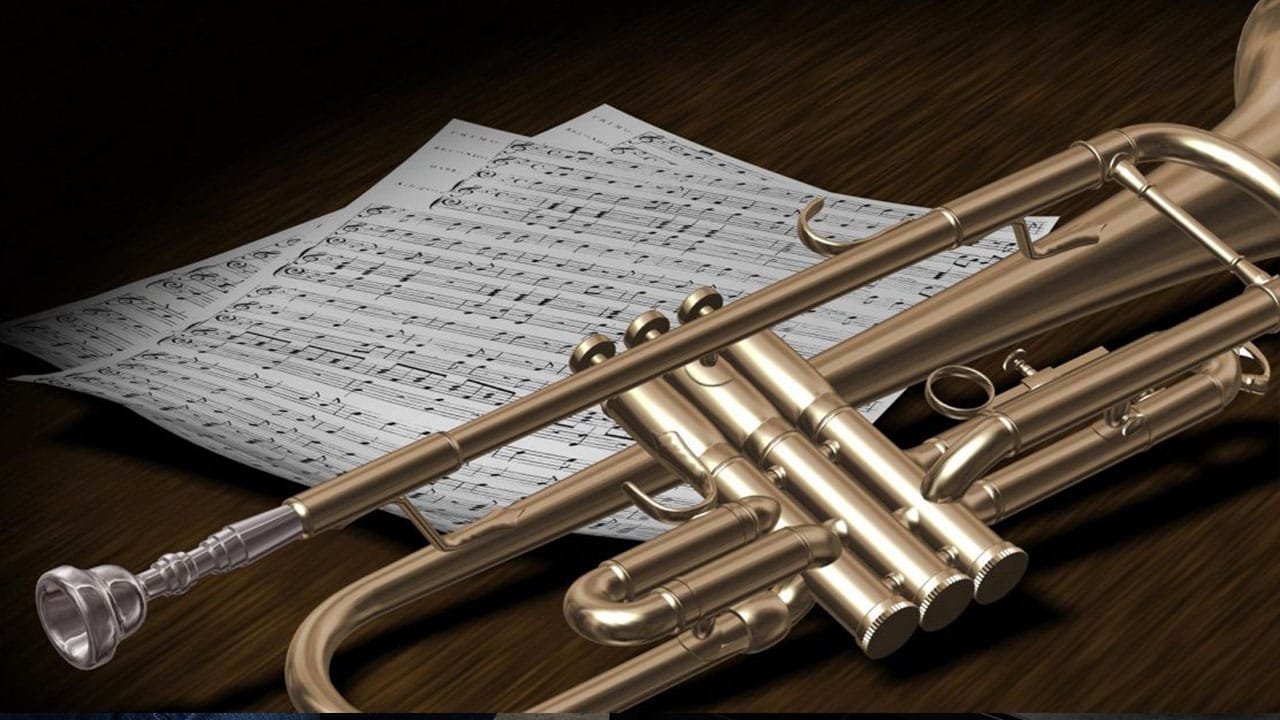Buckle up for an incredible journey into the enchanting world of trumpets! Join us as we delve into the captivating history, uncover mind-boggling scientific facts, and explore the vibrant sounds that make this instrument so extraordinary. From its humble origins to its rocking presence in modern music, we’ll leave you in awe of the trumpet’s unique charm and the musical emotions it evokes. Get ready to have your mind blown!
Fun Facts About Trumpets
Trumpets, those shiny, brass instruments, have a history that stretches back further than you might think—we’re talking thousands of years! Here are some fascinating tidbits about these iconic instruments:
- Ancient Origins: Forget iPhones and the internet; trumpets have been around for over 3,000 years! That’s older than ancient Rome! Imagine the stories these instruments could tell if they could talk…
- Military Might: Trumpets weren’t always just about making music. For centuries, armies used them to rally their troops and give commands on the battlefield. Talk about a powerful sound! âš”ï¸
- A Modern Twist: While trumpets have been gracing us with their presence for millennia, the ones we see today with all those fancy valves? Those are a more recent invention, popping up in the mid-1800s.
- Sound Chameleons: From a whisper to a roar, trumpets can create an incredible range of sounds. It’s all thanks to that unique mouthpiece and the player’s skill in controlling their breath and lips.
- Beyond the Battlefield: Sure, trumpets have a storied military past, but their impact on culture and society is huge. Think about it—trumpets are in everything from classical orchestras to jazz bands to rock concerts!
- Jazz Giants and Rock Legends: Speaking of jazz and rock, the trumpet has played a leading role in shaping those genres. Legends like Louis Armstrong, Dizzy Gillespie, and Miles Davis come to mind. Their trumpet skills were out of this world! 🌎
- Mind and Body: Playing the trumpet isn’t just about blowing air. It requires serious breath control, precise lip tension, and nimble fingers dancing across those valves. It’s like a full-body workout for musicians!
- Endurance is Key: Trumpet players are known for their stamina. Holding those high notes and playing complex melodies takes a lot of lungpower. These musicians are musical athletes!
- Space Jams: Ever wondered what music on the moon would sound like? Astronaut Buzz Aldrin brought a trumpet along on the Apollo 11 mission. Talk about taking your instrument on tour! 🚀
- More to Discover: This is just a taste of the fascinating world of trumpets. There’s so much more to explore, from the science of sound waves to the intricacies of different playing styles. So, keep your ears open, and you never know when you might hear a trumpet adding its unique voice to the world.
What Makes a Trumpet Special?
We’ve already touched on some aspects of the trumpet, but let’s delve a little deeper into what makes this instrument truly stand out. It’s not just about shiny brass and loud noises, you know!
One of the coolest things about the trumpet is how much sound it can squeeze out of a seemingly simple design. Think about it: you’ve got this long tube, actually closer to 6.5 feet of tubing all coiled up, and just three valves to change the notes. Yet, skilled players can coax out a whopping 45 different pitches! That’s a testament not only to the trumpet’s design but also to the dedication and ingenuity of trumpet players throughout history.
And the sounds those pitches create! We’re talking everything from the regal blare of a fanfare that sends shivers down your spine to the smooth, almost whispered tones of a jazz solo that draw you in close. This incredible range is part of what makes the trumpet such a versatile instrument, popping up in orchestras, jazz bands, rock groups, and more.
Now, don’t let those three valves fool you – mastering them is a journey of its own! It’s not like pressing piano keys; trumpet players use their lips to create vibrations against the mouthpiece, and the valves just change the length of the tubing the air travels through. It’s a delicate dance between breath control, lip tension, and fingerwork that takes serious practice to perfect.
But the trumpet’s story goes way beyond musical notes. This instrument has a history stretching back thousands of years, all the way to ancient civilizations. Back then, trumpets weren’t just making music; they were vital tools for communication on the battlefield, signaling commands, and even striking fear into the hearts of enemies. Today, you can still feel that sense of history and power when you hear a trumpet call echoing across a military parade ground.
And then there’s the cultural impact. The trumpet isn’t just an instrument; it’s a symbol. It represents victory, celebration, and a touch of grandeur. Whether it’s the triumphant melody at a sports game or the joyful notes announcing a wedding party, the trumpet’s voice adds a distinct flavor of excitement and importance to these moments.
While we have a good understanding of the trumpet’s mechanics and history, research continues to explore its evolution and the nuances of its sound production. For instance, some experts are delving into how different materials used in trumpet construction might subtly influence the instrument’s tone, while others are studying the physics of airflow and its impact on sound quality. It’s a reminder that even with an instrument as seemingly straightforward as the trumpet, there’s always more to discover!
For further exploration:
- Baines, A. (1991). Brass instruments: their history and development. Dover Publications.
What are trumpets known for?
So, we’ve talked about how awesome trumpets are, but let’s dive into what truly makes them stand out in the orchestra – and beyond, really! They’re famous for their powerful, bright sound that can grab your attention from the first note. You know, the kind of sound that sends shivers down your spine during a powerful movie score or makes you want to jump up and dance at a jazz concert.
Think about it – trumpets have been around for ages, like way back to ancient civilizations! Over time, they’ve gone through some serious makeovers, morphing from simple horns to the sleek, coiled instruments we recognize today. This evolution suggests people have always been tinkering, trying to find new ways to create awesome music with trumpets.
One of the coolest things about the trumpet is its incredible range. It can hit those super high notes that seem to pierce the heavens, but it can also deliver smooth, mellow melodies that tug at your heartstrings. This versatility means trumpets can blend into all sorts of musical styles. You’ll find them holding their own in classical orchestras, jazzing it up in smoky clubs, adding a punch to pop songs, and even bringing the energy to Latin dance music. Talk about a well-rounded instrument!
But trumpets aren’t just about making beautiful music. Historically, they’ve played a big role in military traditions. Imagine armies charging into battle with the rousing sound of trumpets urging them forward. Their piercing calls were used to signal commands, rally the troops, and even strike fear into the hearts of the enemy. Talk about a powerful voice on the battlefield!
And when it’s time to celebrate, guess what instrument leads the party? You got it – the trumpet! From grand parades and festivals to victory marches and even your local town fair, that bright, brassy sound always seems to signal a good time. It’s a sound that brings people together, sparking feelings of joy, excitement, and shared celebration.
So, yeah, trumpets are pretty cool instruments. They’ve got history, they’ve got versatility, and they’ve definitely got that “wow” factor. The next time you hear a trumpet, take a moment to appreciate the long and fascinating journey it took to create that sound.
How old are trumpets?
We’ve already established that trumpets have a rich history, but just how far back does their story go? Well, buckle up because we’re talking seriously old school here. Think back over 3,500 years! Yep, you read that right – archaeologists have actually dug up playable trumpets from ancient Egypt and Greece. It’s mind-blowing to think that these civilizations were using trumpets in their music way back then, making them a cornerstone of musical expression from the very beginning.
What’s truly fascinating is how much the trumpet has transformed over the centuries. We’re talking about an instrument that started its life being crafted from whatever natural materials people could get their hands on – animal horns, seashells, you name it. Can you imagine the sound? It probably wouldn’t have sounded quite like the trumpets we know and love today! Then came the move to metal construction, which must have been a game-changer. And let’s not forget the revolutionary addition of valves in the 19th century – a stroke of genius that gave trumpeters the power to control pitch and express themselves with far greater dexterity.
But the trumpet isn’t just about beautiful music. Oh no, this instrument has a history as a powerful tool, too. Imagine the battlefield: the clash of swords, the thunder of horses – and cutting through it all, the piercing sound of the trumpet. That’s right, for centuries, trumpets were basically the military’s PA system! They were used to bark out commands, fire up the troops, and strike fear into the hearts of the enemy. Beyond the battlefield, trumpets have played a starring role in all sorts of cultural events. From religious ceremonies and royal processions to parties and celebrations, the trumpet has always been there, adding a touch of grandeur and a whole lot of volume!
Think about the sheer range of a trumpet – it can hit those sky-high notes that send shivers down your spine, but it can also deliver a soulful low note that just resonates in your chest. It’s this incredible versatility that has made the trumpet a favorite across so many different musical genres. We’re talking classical masterpieces, swinging jazz improvisations, and pretty much everything in between. Orchestras, brass bands, you name it – the trumpet is right there in the thick of it, shaping the sound and adding its unique voice.
So, there you have it – the trumpet. An instrument that has truly stood the test of time. It’s been around for thousands of years, constantly evolving and finding new ways to amaze us. From its ancient origins to its modern-day glory, the trumpet continues to captivate musicians and music lovers alike. Whether you’re a seasoned player or just appreciate a good tune, you can’t help but be blown away by the sheer power and artistry of this timeless instrument.
Who invented the trumpet?
So, we’ve established that the trumpet has been around for ages, right? But can we pinpoint the exact moment it came to be? Well, it’s not quite as simple as saying “so-and-so invented the trumpet on this date.” It’s more like a puzzle with pieces scattered across thousands of years.
Think about it – way back in 1500 BC, folks weren’t exactly keeping detailed records of their inventions. They were probably more concerned with, you know, finding food and not getting eaten by sabertooth tigers.
What we do know is that the earliest trumpets were nothing like the shiny brass instruments we see today. Imagine something crafted from an animal horn or maybe a simple metal tube. These primitive trumpets were probably used for signaling across distances – think warning calls or announcements – and maybe even adding some drama to religious ceremonies.
As time marched on, so did the trumpet. Different cultures put their own spin on it, experimenting with shapes and materials. It was a slow evolution, with each generation of craftspeople tweaking the design, trying to squeeze out a better sound.
Then came the 19th century – boom! Someone had the brilliant idea of adding valves to the trumpet, and that, my friend, was a game-changer. It’s like going from a bicycle to a sports car! Suddenly, trumpeters could play a wider range of notes, making the instrument far more versatile and expressive.
Of course, we can’t talk about the trumpet without mentioning the legends who blew everyone away with their incredible talent. Louis Armstrong, Miles Davis, Dizzy Gillespie – these guys weren’t just musicians; they were innovators who pushed the boundaries of what a trumpet could do. Their music continues to inspire and amaze us today.
From its humble beginnings as a simple signaling device to its place as a star instrument in orchestras and jazz bands worldwide, the trumpet’s journey is a testament to human ingenuity and our endless fascination with music. Who knows what the future holds for this iconic instrument? Maybe someday, you’ll be the one to invent the next big thing in trumpet technology!
What are 5 facts about the trumpet?
We’ve already covered some basics about the trumpet, but let’s dive a little deeper and uncover some fascinating tidbits about this iconic instrument. Trust me, there’s more to it than meets the eye (or ear!).
5 Facts About the Trumpet:
- Three Valves, Tons of Notes: You might look at a trumpet and think, “Three valves, how many notes can you really play?”. Well, prepare to be amazed! Those three simple valves, when pressed in different combinations, unlock a whopping 45 distinct pitches. It’s like a musical Rubik’s Cube, with each valve combination revealing a new sonic possibility. This wide range is a big part of why the trumpet is such a versatile and popular instrument.
- From Battlefields to Bands: Think of a trumpet, and you might picture a military band, and you wouldn’t be wrong! Trumpets have a long and storied history in the military. For centuries, their powerful sound has been used on battlefields, not just for music, but to issue commands and boost morale. From the Roman legions to modern-day armies, the trumpet’s clear, bright tone has served as a call to action and a symbol of strength.
- An Instrument with Ancient Roots: The trumpet we know today might seem modern, but its origins likely stretch back thousands of years. Archaeologists have discovered instruments resembling trumpets in the tomb of the Egyptian Pharaoh Tutankhamun! While we can’t be entirely sure what they sounded like back then, these ancient trumpets suggest that humans have been drawn to the bright, resonant sound of brass instruments for a very, very long time.
- Valves: The Game Changer: Before the 19th century, trumpets were a bit more limited in the notes they could play smoothly. That all changed with the ingenious invention of valves! These mechanisms, when pressed, alter the length of the air column inside the trumpet, allowing players to effortlessly transition between different pitches. It was a revolution in trumpet design, opening up a whole new world of musical possibilities and paving the way for the instrument we know and love today.
- A Musical Chameleon: From the soaring melodies of classical orchestras to the soulful improvisations of jazz and the driving energy of pop music, the trumpet is truly a musical chameleon. It can blend into different genres seamlessly, adding its unique voice and character to countless styles of music. This amazing versatility is a testament to the trumpet’s enduring appeal and its ability to connect with listeners across cultures and generations.
Want to learn more? This is just the tip of the iceberg when it comes to the fascinating world of trumpets! There’s a whole lot more to explore, from the different types of trumpets and their unique characteristics to the legendary trumpet players who have shaped the music we listen to today.
What is the rarest type of trumpet?
Okay, so we’ve established that trumpets have been around for ages, but have you ever wondered which type of trumpet is the rarest? Well, it’s like finding a rare Pokémon card—except it makes music!
While there are many different trumpets out there, the title of “rarest” likely goes to the piccolo trumpet. This little guy is pitched in Bâ™, just like its bigger, more common cousin, the standard Bâ™ trumpet. But what makes it so special (and rare) is its size. It’s significantly smaller than the standard trumpet, which can make it quite a challenge to play.
Now, you might be thinking, “Why would anyone want a smaller, harder-to-play trumpet?” Good question! The piccolo trumpet has unique, bright sound that’s perfect for certain types of music, particularly baroque music. It can hit those super high notes that other trumpets can only dream of, giving the music an almost otherworldly feel.
Of course, there are other contenders for the “rare trumpet” title. Some folks might argue for antique trumpets or trumpets made with unusual materials. But, in terms of trumpets you might actually encounter in the wild (or, at least, in a concert hall), the piccolo trumpet takes the cake for its rarity.
It’s worth noting that the world of musical instruments is constantly evolving. New instruments are being created all the time, and old ones are being rediscovered. So, while the piccolo trumpet might be the rarest type of trumpet today, who knows what sonic treasures tomorrow might bring?
What makes a good trumpet?
Now that we’ve touched on some key takeaways, let’s dive a little deeper into what really makes a trumpet stand out from the crowd. It’s a bit like finding a good pair of shoes – you want something that not only sounds great but also feels “right” when you play it.
One of the first things you’ll probably notice about a trumpet is its sound. Think of it like the trumpet’s personality. Some trumpets have a bright, almost piercing quality to their tone, which can be fantastic for cutting through a big band sound. Others might have a warmer, more mellow tone that’s perfect for blending in a smaller group or playing softer melodies. What sounds “good” here really depends on your personal taste and what kind of music you want to play.
Then there’s the construction. Trumpets are usually made from brass, but you’ll find some with silver or even gold plating. This isn’t just for looks – the material can affect the way the trumpet vibrates and, in turn, how it sounds. Generally, a heavier metal like gold can give the trumpet a richer, more complex tone. You’ll also want to consider the overall build quality. A well-made trumpet will have smooth, responsive valves and tight joints between the different parts, all of which contribute to a more reliable and enjoyable playing experience.
Of course, you can’t talk about trumpets without mentioning the design. The shape of the bell, how long the tubing is, even the type of valves it uses – these all play a part in shaping the trumpet’s sound and how it feels to play. For example, a larger bell might give you a bigger, broader sound, while a trumpet with a tighter wrap might feel a bit more compact and easier to hold. There’s no single “best” design, it’s all about finding what works for you.
Speaking of finding what works, the manufacturer can play a big role in a trumpet’s quality. Just like with any craft, some brands are known for their attention to detail and consistent quality. It’s worth doing a little research and checking out reviews from other trumpet players to get a feel for different brands and what they’re known for.
Finally, remember that a good trumpet is more than just the sum of its parts. It’s about how all these elements come together to create an instrument that inspires you to play. So, when you’re trying out trumpets, don’t be afraid to trust your gut. If it feels good and sounds good to you, then it probably is a good trumpet. And who knows, it might just be the start of a beautiful musical friendship.
What Makes a Trumpet a Professional Trumpet?
So, we’ve talked about different types of trumpets, but what really sets a “professional” trumpet apart from the rest? It’s like the difference between a good pair of sneakers and those high-end ones athletes wear – it’s all about the details and how they come together to create something exceptional.
Think of it this way: a professional trumpet is built to work as hard as the musician playing it. It’s not just about looking fancy, though many of them do! It’s about delivering top-notch performance night after night, whether it’s a soaring solo in a concert hall or a smooth melody in a smoky jazz club.
One of the biggest telltale signs of a professional trumpet is the craftsmanship. These instruments are often made with painstaking attention to detail, ensuring everything from the valves to the bell are perfectly in tune, literally. This precision translates into a more responsive and reliable instrument, allowing musicians to express themselves with nuance and accuracy.
Then you have the materials. Now, while a beginner trumpet might be made of standard brass, a professional one often boasts higher grades of brass, sometimes even incorporating metals like silver or gold. Not only can this impact the look of the instrument, but it can actually influence the sound. Think of it like this: the type of wood used to build a guitar affects its tone, and it’s a similar concept with the metals in a trumpet.
And don’t even get me started on the design! Professional trumpets often go through meticulous design processes, with every curve and length of tubing carefully considered to optimize sound projection and control. It’s like the difference between a car designed for fuel efficiency and one built for speed – every element serves a specific purpose.
Now, here’s the thing: while some trumpet players might swear by a certain brand or model, the definition of a “professional” trumpet can be a little subjective. It’s like asking ten chefs for their favorite knife – you’ll get some varied opinions! Ultimately, the best trumpet for a professional is the one that helps them achieve their unique sound and style.
It’s an area where ongoing research and advancements in materials and manufacturing techniques might continue to shape what we consider a “professional” trumpet in the future.
But for now, remember this: a professional trumpet is more than just a shiny instrument. It’s a testament to craftsmanship, a symphony of materials, and a testament to the dedication of both the maker and the musician.
What is the personality of a trumpet?
We’ve talked about the trumpet’s history and how it works, but what about its… vibe? What kind of personality would we assign to this beloved brass instrument if it were a person?
Well, imagine this: the trumpet is often described as having a “bright” and “piercing” sound, right? It’s the life of the party, the one always ready to grab the spotlight. It’s bold, confident, and commands attention, whether it’s leading a military march or belting out a soaring jazz solo.
But there’s more to it than just being loud. The trumpet can also be incredibly expressive. Think about a mournful trumpet solo in a movie score, or the way it can convey joy and triumph in a classical piece. It’s an instrument of contrasts – powerful yet sensitive, capable of both delicate whispers and powerful roars.
Some might even say the trumpet has a touch of “drama” to its personality. It takes center stage and isn’t afraid to show off a little. It’s not an instrument for wallflowers – it’s for those who want to be heard!
Of course, this is all a bit of fun, imagining an instrument as having a human personality. But it does give us a sense of the trumpet’s unique character and the feelings it evokes in both players and listeners.
What Emotion do Trumpets Have?
We’ve talked about the history and the power of the trumpet, but what about its soul? What feeling does a trumpet give you? You know, that certain something that makes it more than just metal and music.
Well, trumpets are like chameleons of emotion. They can blare out a joyful fanfare that makes you want to dance, or whisper a mournful tune that tugs at your heartstrings. It’s all about how the musician plays it.
Think about it. Ancient civilizations thought trumpets had magical powers because their sound was so intense and moving. That’s a powerful testament to the emotional depth of this instrument! Fast forward to today, and trumpets are still used for all sorts of powerful moments. They herald grand entrances, celebrate victories, and add gravitas to solemn occasions.
But the trumpet isn’t limited to just big, dramatic feelings. It can swing with playfulness in jazz, bring a touch of melancholy to blues, and even rock out with raw energy!
So, what emotion does a trumpet have? It’s less about a single emotion and more about the trumpet’s ability to be a vessel for any emotion. It’s a channel for the human experience, capable of amplifying whatever feeling the player wants to express. In a way, it becomes a mirror reflecting our own joys, sorrows, triumphs, and struggles.
Perhaps that’s why the trumpet continues to resonate so deeply with us, even after centuries. It speaks a language that goes beyond words, directly to the heart of what it means to be human.
Speaking of fascinating sounds and histories, did you know that even blizzards have their own unique stories to tell? Discover fascinating and little-known fun facts about blizzards!
- Star Ring Trends: Etsy vs Amazon - March 28, 2025
- Boost Pollinator Habitats: Baby Blue Eyes Sustainable Farming Guide - March 28, 2025
- Protect Big Black Bears: Effective Conservation Strategies - March 28, 2025

















1 thought on “Blow Your Mind: Fun Facts About Trumpets”
Comments are closed.